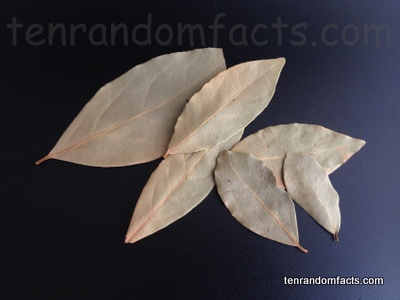Make tea with style, using a bay leaf, or two.
- A bay leaf is vegetation that is typically used for culinary purposes, as a flavouring, and the leaves can be derived from a variety of plants.
- Bay leaves come from plants of the families Lauraceae and Myrtaceae, the family of true laurels and myrtles respectively, while the most commonly available leaves are from the bay laurel tree with the scientific name Laurus nobilis.
- Bay leaves are typically light in weight, and range from green to a light brown in colour; and they can be used fresh or dried, and are commonly available in a dried form in supermarkets.
- Ancient Greeks used bay leaves to flavour foods, and they have also been used in Mediterranean, American and some Asian cuisines.
- The bay leaf has a flavour from sharp to bitter, and if used fresh, the flavour will be mild, while the dried leaf emits an aroma similar to herbs.
- Whole, crumbled or ground bay leaves can be used in cooking, while the latter two methods unleash more flavour, however crushed or whole bay leaves are usually removed from the food before serving, as consuming them can be unpleasant and a hazard.
- The aroma from a bay leaf can ward off insects, especially pantry moths, and they can also inhibit mould; while a special oil can be derived from the leaves, which can be sold as essential oil.
- Caution should be taken when obtaining bay leaves, as similar looking leaves can be toxic to humans if they are accidentally used instead.
- Food that can be flavoured with bay leaves includes soup, meat dishes, breads, cream, seafood, vegetables, rice, and condiments; and the leaves are one of the main ingredients in the bundle of herbs called ‘bouquet garnis’.
- Bay leaves are high in vitamin A, vitamin C, iron, vitamin B6 and manganese and the leaves can be used to make a tea drink.
Bibliography:
Bay Leaf Nutrition Facts, 2015, Nutrition And You, http://www.nutrition-and-you.com/bay-leaf.html
Bay Leaf, 2014, Wikipedia, http://en.wikipedia.org/wiki/Bay_leaf







